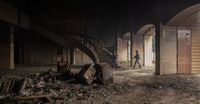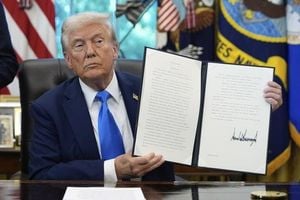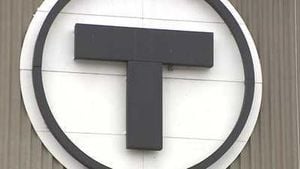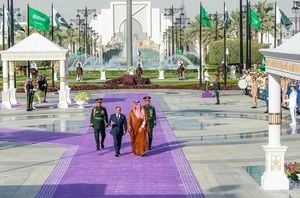The streets of Kathmandu on September 10, 2025, bore little resemblance to the bustling capital they had been just days before. Instead, the city was eerily quiet, its roads patrolled by military vehicles and soldiers enforcing a strict curfew. This uneasy calm followed two days of violent anti-government protests that shook Nepal to its core, culminating in the resignation of Prime Minister K P Sharma Oli and a sweeping military intervention to restore order.
The unrest began on September 8, when thousands of young Nepalis—many still in school and college uniforms—poured into the streets to protest a government ban on social media and long-standing grievances over corruption and nepotism. According to The Kathmandu Post, these demonstrators carried placards with messages like “Shut down corruption, not social media” and “Youths against corruption.” Their anger was palpable, fueled by years of frustration with a political class perceived as self-serving and unresponsive to the needs of ordinary citizens.
As the protests gained momentum, tensions escalated rapidly. Police responded with tear gas, water cannons, and even live bullets in an attempt to disperse the crowds. The crackdown proved deadly: at least 19 people were killed—17 in Kathmandu and two in Sunsari district—and more than 400 were injured, The Kathmandu Post reported. Despite the violence and the imposition of curfews in Kathmandu and other cities, the protests continued unabated, even after the government lifted the social media ban late on September 8.
The following day, September 9, saw a dramatic escalation. Protesters stormed and set fire to the Parliament building, the President’s Office, the Prime Minister’s residence, government offices, political party headquarters, and the homes of senior leaders. Hundreds forced their way into Prime Minister Oli’s office, demanding his immediate resignation over the deaths resulting from the police crackdown. The scenes were chaotic—charred filing cabinets, mangled metal, and shattered glass filled the halls of power, while the air remained thick with smoke from the fires.
Faced with mounting pressure, Prime Minister Oli called for an all-party meeting, urging dialogue as the only way forward. But within hours, he announced his resignation, leaving the country in a state of political limbo. According to PTI, the resignation came just after agitators entered his office, marking a stunning collapse of the government’s authority amid the youth-led uprising.
With the government in disarray and violence threatening to spiral further, the Nepal Army assumed command of nationwide security operations at 10 p.m. on September 9. By early morning on September 10, troops had fanned out across Kathmandu, Lalitpur, Bhaktapur, and other major cities, enforcing restrictive orders and a curfew that would last until 6 a.m. the next day. The army made clear its intent: “Any form of demonstration, vandalism, arson, or attacks targeting individuals and property during this period would be treated as criminal activity and dealt with accordingly,” the Army said in a statement cited by The Assam Tribune.
Authorities ordered residents to remain indoors unless “absolutely necessary.” The usually lively streets of Kathmandu became deserted, with only a handful of people venturing out to stock up on essentials. Fire trucks crisscrossed the city, responding to blazes in government and private buildings—remnants of the chaos from the day before. “We have deployed our troops to prevent any untoward incidents, including looting and vandalism,” an officer from the Nepal Army headquarters told The Economic Times.
The military also issued stern warnings via loudspeakers, cautioning that “vandalism, looting, arson, or attacks on individuals and property in the name of protest will be treated as punishable crimes,” as reported by The New Indian Express. Tanks rolled past burnt vehicles and tyres, underscoring the gravity of the situation in this nation of 30 million people.
Inside the Parliament, the devastation was stark. “It’s very sad to see our country like this, because this is not what we hoped for, not what we imagined, not what we wanted,” said 26-year-old Rubina Shrestha, who came with her relatives to help clean up the aftermath. Umesh Shah, another young volunteer, added, “We felt so bad, we were crying all night—everywhere totally collapsed.” Their words, quoted by Sky News, captured the heartbreak and disillusionment of a generation that had hoped for peaceful change.
The protests were not only a reaction to the social media ban but also to deeper issues of corruption, favoritism, and lack of accountability. Nearly 5,000 young Nepalis leave the country daily in search of jobs abroad, a statistic that has only added to the sense of crisis and urgency for reform, according to AFP.
Recognizing the gravity of the situation, Nepal’s President Ram Chandra Paudel appealed to all parties, including the agitating Gen Z, to exercise restraint and come forward for dialogue. “Citizens’ demands can be addressed peacefully in a democracy,” he emphasized in his statement. The army’s Chief of Staff, General Ashok Raj Sigdel, echoed this sentiment in a video message, inviting Gen Z leaders for talks: “To provide the nation with a peaceful resolution, we urge all groups involved in the protest to call it off and engage in dialogue.”
International voices weighed in as well. United Nations Secretary-General Antonio Guterres urged “restraint to avoid a further escalation of violence,” while India’s Prime Minister Narendra Modi stated that the “stability, peace and prosperity of Nepal are of utmost importance to us.”
As the country grapples with the aftermath, questions remain about what comes next. Some, like constitutional lawyer Dipendra Jha, have called for a caretaker government that includes figures who retain credibility with Nepal’s youth. Others, such as Crisis Group analyst Ashish Pradhan, stress the need for a “transitional arrangement” that responds to the demands of the protesters and restores faith in democratic institutions.
For now, Kathmandu’s airport is expected to resume operations, a small sign that some normalcy may return. Yet beneath the surface, the rage and yearning for change that fueled this week’s protests remain. As one Gen Z protester, Subhash, told ANI, “We demand a good leader. We want new rules and regulations in the country, so youth can have more opportunities.”
This week’s events have shown the remarkable power of Nepal’s youth—but also the fragility of the nation’s democratic experiment. Whether this moment becomes a turning point for renewal or the beginning of deeper instability is still uncertain. What is clear is that the voices of a new generation have shaken Nepal’s political order to its foundations, and the country’s future now hangs in the balance.






